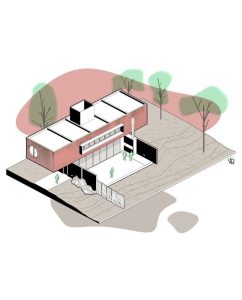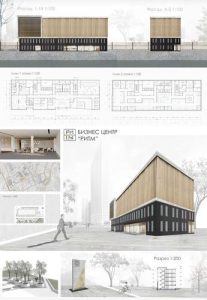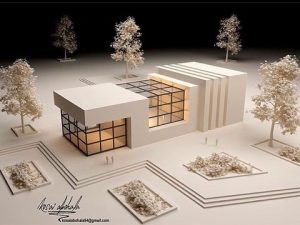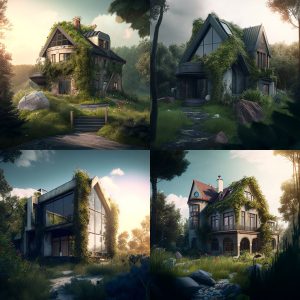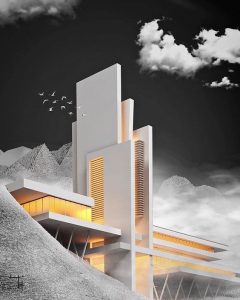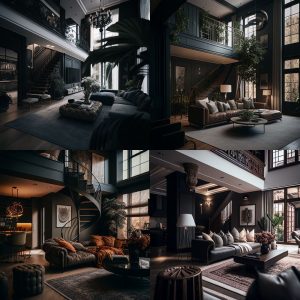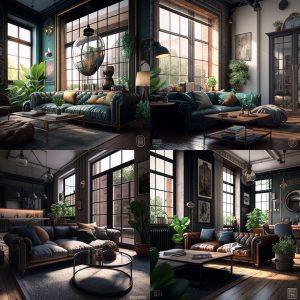Visualization and architectural representation play an essential role in the design and communication of architectural projects. Whether you’re an architect, a potential client, or a construction professional, it is crucial to understand the importance of these visual techniques for a better understanding and appreciation of architecture. In this article, we will explore in detail architectural visualization and representation methods, as well as their advantages, challenges, and future trends.
Architecture is a complex visual art that requires clear and precise communication to realize an architectural vision. This is where architectural visualization and representation come into play. These techniques bring architectural ideas and concepts to life, transforming them into tangible and understandable images. Whether it’s for construction plans, realistic 3D models, or virtual tours, visualization and representation are essential for effectively sharing and communicating architectural ideas.
I. What is architectural visualization ?
A. Definition and Purpose
Architectural visualization is the process of creating images or animations representing buildings or architectural spaces. Its aim is to provide a realistic and accurate vision of projects using various visual techniques and tools. The primary goal of architectural visualization is to enable stakeholders to visualize and understand the final outcome of the project, even before construction begins.
B. Techniques et outils utilisés
Architectural visualization utilizes a combination of techniques and tools to represent projects in a visually appealing and informative manner. These techniques include 3D modeling, rendering, lighting, texturing, and animation. Specialized software such as AutoCAD, SketchUp, Revit, and 3ds Max are commonly used to create virtual models and realistic renderings.
II. The role of architectural representation
Architectural representation plays a crucial role in the communication and presentation of architectural projects. It involves expressing architectural ideas and concepts in a visual and understandable manner. While architectural visualization focuses on creating realistic images, architectural representation encompasses a range of traditional and modern methods to depict projects.
A. Traditional methods
Traditional methods of architectural representation include freehand drawings, sketches, plans, and physical models. These techniques have been used for centuries to communicate architectural ideas. They have their own artistic charm and allow architects to showcase their creativity and artistic sensibility.
B. Evolution of representation techniques
With the advancement of technology, new methods of architectural representation have emerged. Digital tools such as 3D modeling software, rendering software, and virtual reality have revolutionized the way projects are represented. These technologies enable the creation of realistic images, interactive animations, and immersive virtual tours, providing a more engaging experience for stakeholders.
III. Advantages of architectural visualization and representation
Architectural visualization and representation offer numerous advantages for architects, clients, and the construction industry as a whole. Here are some of the key benefits:
A. Communication and collaboration
Architectural visualization enables the effective communication of complex ideas and concepts to various stakeholders. Images and 3D models facilitate understanding and discussion about the project, fostering better collaboration among architects, engineers, clients, and other professionals involved.
B. Improved design decision-making
Architectural visualization and representation enable architects to explore different design options and make informed decisions. By visualizing the project in a virtual environment, it is possible to assess the impact of architectural choices, materials, and lighting, thus contributing to improving the overall quality of the project.
C. Client engagement and marketing
Architectural visualization plays a key role in client engagement and project promotion. Attractive and realistic visuals help clients visualize their future space and project themselves into the design. Additionally, these images can be used in marketing materials such as brochures, websites, and presentations to attract new clients and promote architectural projects.
IV. Types of architectural visualization and representation
There are several types of architectural visualization and representation, each offering specific advantages in communicating and representing projects.
A. Drawings and 2D Plans
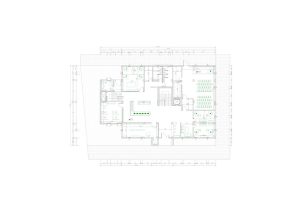
2D drawings and plans are among the most traditional forms of architectural representation. They use lines, symbols, and notations to depict the dimensions, shapes, and details of a building. These drawings are essential for communicating construction plans, elevations, and cross-sections. They provide an accurate overview of the project and serve as a reference for architects and builders.
B. 3D modeling and rendering
3D modeling and rendering are more advanced techniques of architectural visualization. They enable the creation of realistic three-dimensional virtual models of buildings and spaces. These models can be viewed from various angles, with realistic textures, materials, and lighting effects. Rendering is used to generate still images from the 3D models, thus providing a detailed and aesthetically pleasing representation of projects.
C.Virtual Reality (VR) and Augmented Reality (AR)
Virtual Reality (VR) and Augmented Reality (AR) are emerging technologies revolutionizing architectural visualization. Virtual Reality allows users to immerse themselves in a fully immersive virtual environment, where they can explore and interact with three-dimensional architectural models. Augmented Reality, on the other hand, overlays virtual elements onto the real environment, allowing virtual models to be visualized within the context of the real space.
V. The impact of technology on architectural visualization
The advancement of technology has had a significant impact on architectural visualization. Advances in 3D modeling software, rendering, and other digital tools have greatly enhanced visualization and representation capabilities. Here are some aspects of the impact of technology:
A. Software and hardware advancements
Architectural visualization software has become more powerful and sophisticated, offering advanced features for modeling, rendering, and animation. Additionally, hardware advancements such as faster graphics cards and processors enable the manipulation of complex 3D models in real-time, providing a smooth and realistic visualization experience.
B. Integration of digital tools in the design process
Digital tools have become an integral part of the architectural design process. Architects use 3D modeling software from the early stages of the project to explore different ideas and concepts. These tools also enable closer collaboration among various project stakeholders, thereby fostering better communication and a more efficient workflow.
VI. Challenges and considerations of architectural visualization
Despite the advantages of architectural visualization, there are also challenges and considerations to take into account when using it. Here are some of the key challenges:
A. Balance between realism and artistic expression
One of the major challenges of architectural visualization is finding the right balance between realism and artistic expression. While realism can help create accurate representations, it is important not to lose sight of creativity and artistic interpretation in representing architectural projects.
B. Limitations et contraintes techniques
La visualisation architecturale peut être limitée par des contraintes techniques telles que la capacité de traitement, les limitations matérielles et les contraintes de temps. Il est essentiel de comprendre ces limitations et de trouver des solutions créatives pour surmonter les obstacles techniques afin de produire des visualisations de haute qualité.
C. Aspects éthiques et culturels
La visualisation architecturale soulève également des questions éthiques et culturelles. Il est important de respecter les normes culturelles et sociales lors de la représentation de projets architecturaux. De plus, l’utilisation de la visualisation peut avoir un impact sur l’environnement et la durabilité des projets, ce qui nécessite une réflexion approfondie sur les choix de conception et les matériaux utilisés.
VII. Tendances futures de la visualisation architecturale
La visualisation architecturale continue d’évoluer et de se développer avec l’avancement de la technologie. Voici quelques-unes des tendances futures qui façonneront le domaine de la visualisation architecturale :
A. Artificial Intelligence and Automation
Artificial Intelligence (AI) and automation will play an increasingly important role in architectural visualization. AI algorithms can help automatically generate realistic 3D models from simple sketches, thus speeding up the visualization process. Furthermore, automation will simplify repetitive tasks, allowing professionals to focus more on creativity and design.
B. Interactive and immersive experiences
Technologies like Virtual Reality (VR) and Augmented Reality (AR) will continue to advance, providing more interactive and immersive experiences of architectural visualization. Users will be able to virtually explore architectural spaces, interact with design elements, and experiment with different configurations, offering a more engaging and personalized experience.


